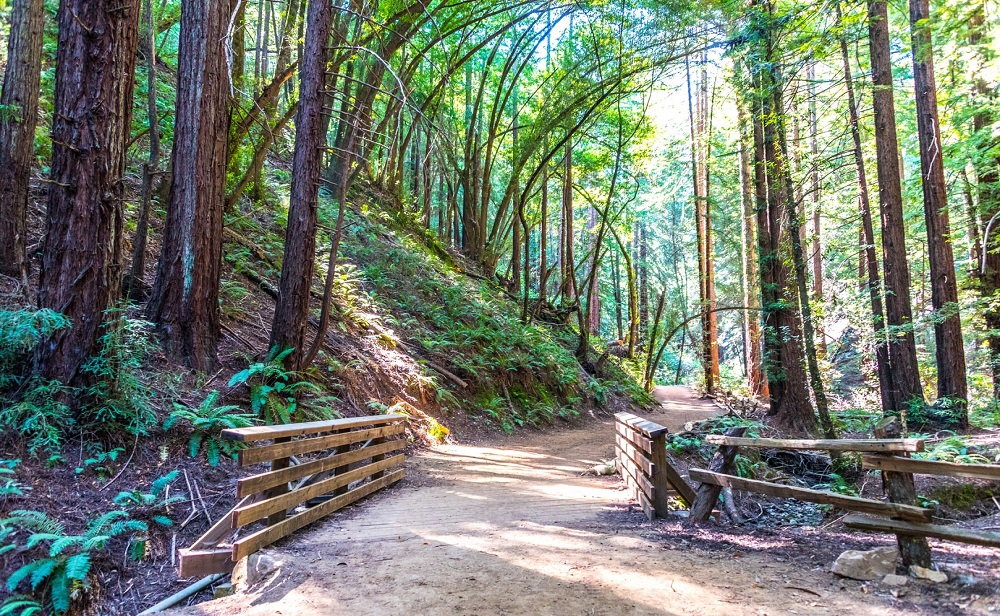Walking and hiking trails near me: Discover nearby outdoor adventures! This guide helps you find the perfect trail, whether you’re a seasoned hiker seeking challenging climbs or a casual walker looking for a peaceful stroll. We’ll explore how to locate trails, understand their difficulty levels, and read user reviews to ensure your next outing is enjoyable and safe. This exploration covers everything from utilizing map APIs to finding detailed trail descriptions and stunning visuals.
We’ll delve into the diverse needs and motivations of those searching for local trails, from fitness enthusiasts to nature lovers. We will also cover how to effectively utilize various mapping services to pinpoint trail locations, compare their accuracy, and present this crucial information in a user-friendly format. Finally, we’ll look at the importance of user reviews and ratings in building trust and ensuring a positive experience for all.
Visual Representation of Trails
High-quality visuals are paramount in creating an engaging and informative trail guide. Images not only enhance the aesthetic appeal but also provide crucial information about trail conditions, points of interest, and overall experience, ultimately influencing user decisions and encouraging exploration. Effective image selection and integration significantly impact user engagement and satisfaction.
Effective Image Selection and Integration
Scenic Viewpoints
A panoramic photograph showcasing a breathtaking vista from a high point on the trail, such as a mountain summit overlooking a valley, would be highly effective. The image should be sharp, well-lit, and ideally capture a sense of scale and distance. Details like the texture of the landscape, the clarity of the distant features, and the overall mood of the scene (e.g., peaceful, dramatic) should be evident. This image would immediately communicate the rewarding experience of hiking the trail and entice users to explore further. Another example could be a photo of a picturesque lake nestled within a forested area, showcasing the tranquility and natural beauty of the trail environment. The composition should highlight the serenity of the scene, perhaps including details like reflections on the water or the interplay of light and shadow.
Challenging Terrain
Images depicting challenging sections of the trail, such as steep inclines, rocky paths, or stream crossings, should be included to manage user expectations. These images should accurately reflect the difficulty level, showcasing the terrain’s features but also emphasizing safety aspects. For instance, a photograph of a steep, rocky ascent should highlight the use of handholds or any safety features along the trail. Another example could be an image of a well-constructed bridge crossing a rushing stream, emphasizing the safety measures implemented. The photograph should be clear enough to show the terrain’s challenges but not so graphic as to deter potential hikers. High resolution and good lighting are crucial to ensure clarity and avoid misrepresenting the terrain’s actual difficulty.
Points of Interest
Images featuring points of interest along the trail, such as historical markers, unique rock formations, or interesting flora and fauna, add value and context to the guide. For example, a close-up shot of a historical marker with legible text, providing context to the area’s history, would enhance the user’s understanding and appreciation of the trail. Another example would be a picture of an unusual rock formation, highlighting its unique geological features and providing scale through the inclusion of a person or object for comparison. The image should be sharp, well-composed, and informative, allowing users to easily identify the point of interest. High-quality visuals make these points engaging and memorable.
Importance of High-Quality Visuals
High-resolution images are crucial. Blurry or poorly lit photos can create a negative impression and deter potential users. Well-composed, sharp images with good lighting and appropriate color balance enhance the overall presentation and credibility of the trail guide. They directly influence user engagement, making the guide more appealing and trustworthy. The use of professional-quality images significantly increases the likelihood of attracting users and encouraging them to explore the trails. A trail guide with visually appealing and informative images is far more likely to be shared and recommended than one with poor-quality visuals. The impact on user experience is significant, creating a positive first impression and establishing trust.
Additional Resources and Information
Planning a successful hike or walk requires more than just knowing the trail; it necessitates preparation and awareness. Accessing reliable information about weather conditions, appropriate gear, and emergency procedures is crucial for a safe and enjoyable experience. The following resources offer valuable assistance in this regard.
Understanding the potential challenges of your chosen route is paramount. Factors such as weather, terrain, and your personal fitness level should all inform your decisions. Equally important is knowing how to react in case of an emergency.
Weather Forecasts
Accurate weather forecasting is essential for any outdoor activity. Unexpected changes in weather conditions can significantly impact safety and enjoyment. Many reliable weather services provide detailed forecasts, often including specific information for mountainous or trail-heavy regions. These forecasts typically include temperature, precipitation, wind speed, and UV index, allowing hikers to dress appropriately and adjust their plans accordingly. For example, a forecast predicting heavy rain might prompt a hiker to postpone their trip or choose an alternative, shorter route.
Gear Recommendations
Appropriate gear can greatly enhance the comfort and safety of your hike or walk. Many websites and outdoor retailers offer detailed gear recommendations, categorized by activity type and weather conditions. These recommendations often include lists of essential items such as sturdy footwear, appropriate clothing layers, a backpack with sufficient capacity, navigation tools (map and compass or GPS device), first-aid kit, water bottles or hydration pack, and appropriate sun protection. For instance, a recommendation for a winter hike might include waterproof boots, thermal layers, and a hat and gloves, while a summer hike might suggest lightweight clothing and a wide-brimmed hat.
Emergency Contact Information
Knowing who to contact in case of an emergency is crucial. Before embarking on any hike or walk, ensure you have readily accessible emergency contact information, including local emergency services numbers and the contact details of someone who knows your plans. Many hiking apps and websites provide information on emergency procedures, including how to signal for help and what information to provide to emergency responders. For instance, many national parks and trail systems have specific emergency contact numbers and designated emergency shelters. It is also advisable to inform someone of your hiking plans, including your intended route, estimated return time, and emergency contact information.
Closing Notes
Planning your next outdoor adventure just got easier! By utilizing the resources and strategies outlined in this guide, you can confidently locate, assess, and enjoy the walking and hiking trails in your area. Remember to always prioritize safety, check weather conditions, and respect the environment. Happy trails!




